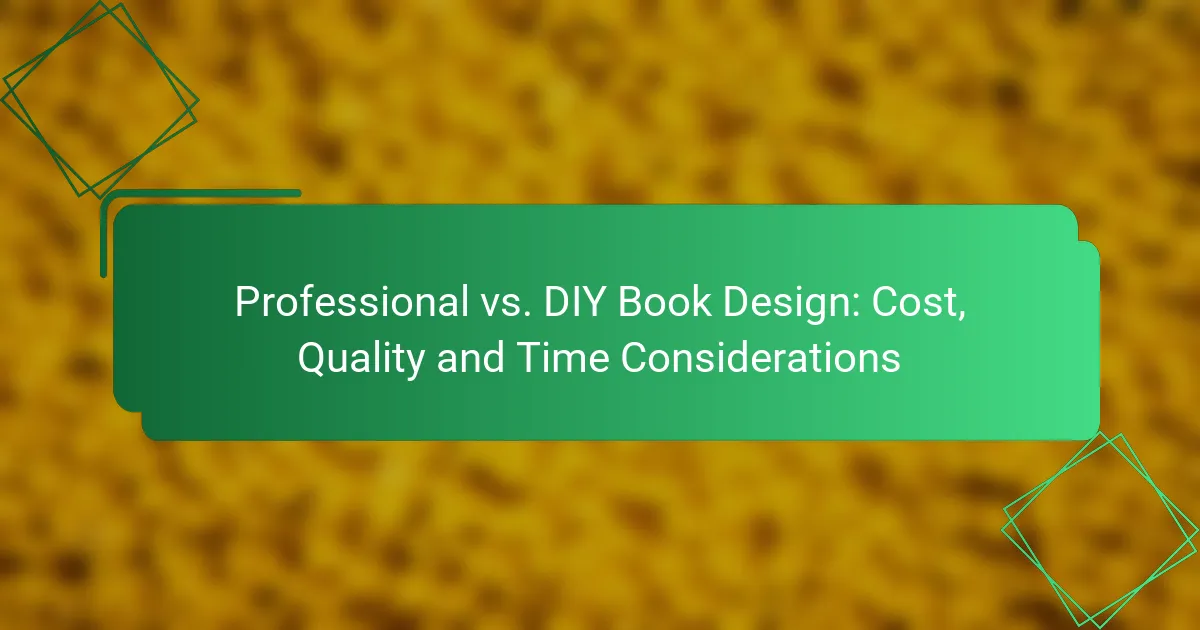When deciding between professional and DIY book design, it’s essential to weigh the cost, quality, and time implications. Professional design services often provide superior quality and a polished final product, but they come with a higher price tag. In contrast, DIY options may save money but can lead to hidden costs and a less refined outcome, with varying time commitments based on your skill level. Understanding these factors will help you make an informed choice that aligns with your budget and timeline.
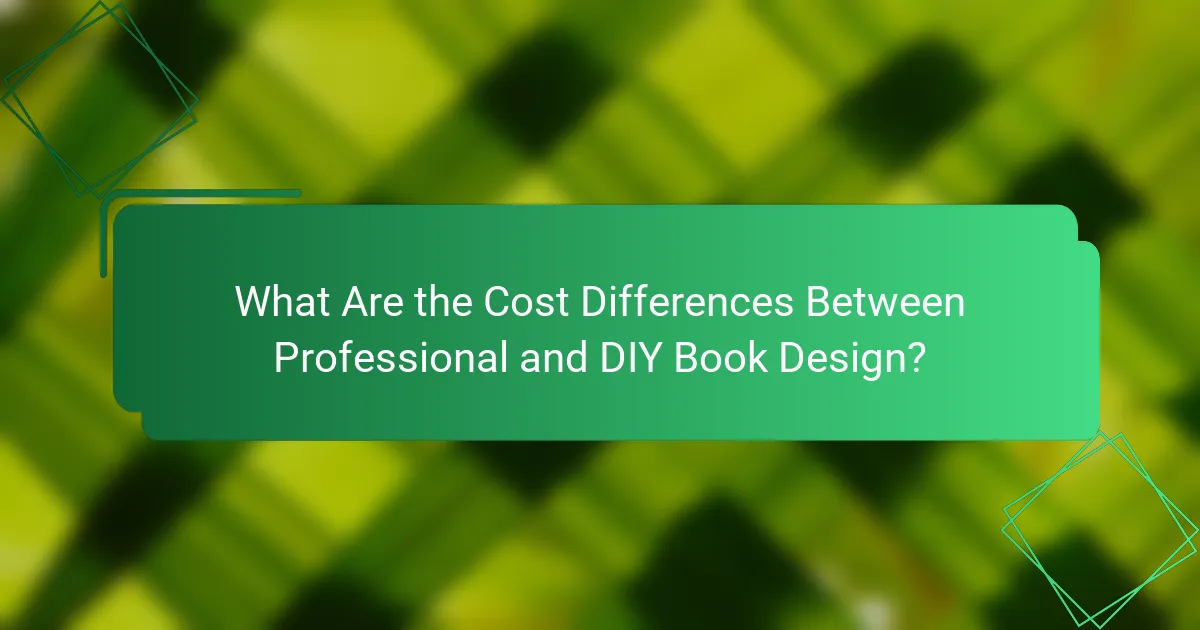
What Are the Cost Differences Between Professional and DIY Book Design?
The cost differences between professional and DIY book design can be significant, impacting your budget and the overall quality of your book. While professional services offer expertise and polished results, DIY options can be much cheaper but may lead to hidden expenses and lower quality.
Professional design costs range from $500 to $5,000
Hiring a professional book designer typically costs between $500 and $5,000, depending on the designer’s experience and the complexity of the project. This investment often includes custom layouts, typography, and cover design, ensuring a polished final product that appeals to readers.
For example, a simple novel cover might cost around $500, while a complex illustrated book could reach the higher end of the spectrum. It’s essential to weigh the potential return on investment against your budget and the book’s target audience.
DIY design costs can be as low as $50
DIY book design can be very affordable, with costs starting as low as $50 for software or online tools. Many authors choose this route to save money, using platforms like Canva or Adobe Spark to create their designs.
However, while the initial costs are low, authors should consider the time and effort required to learn design software and create a professional-looking product. This approach is best suited for those with some design skills or a willingness to learn.
Hidden costs in DIY projects
While DIY book design may seem cost-effective, there are often hidden costs that can add up. These can include purchasing stock images, fonts, or software licenses, as well as the time spent on revisions and learning design principles.
Additionally, if the final product lacks professionalism, it may require hiring a designer later, negating any initial savings. Authors should carefully evaluate their skills and the potential need for professional help to avoid these pitfalls.
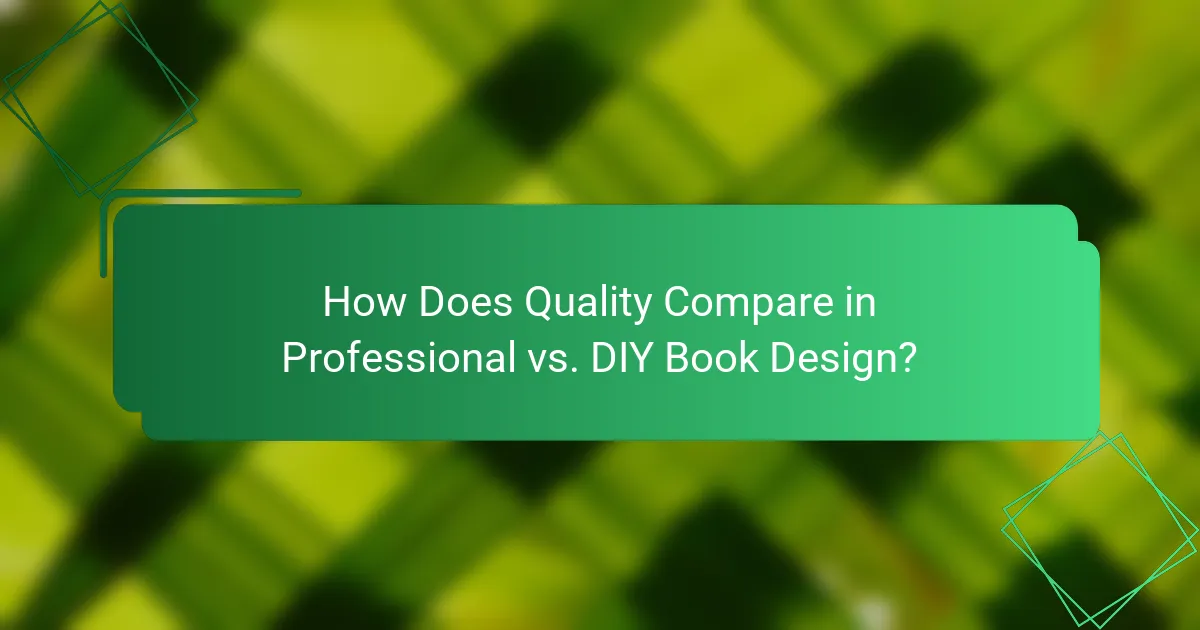
How Does Quality Compare in Professional vs. DIY Book Design?
Professional book design typically offers superior quality compared to DIY approaches, which may result in less polished outcomes. The difference in quality can significantly impact the book’s marketability and reader perception.
Professional designs offer higher quality and polish
Professional book designers possess expertise in typography, layout, and visual storytelling, ensuring that every element of the book is cohesive and appealing. They utilize industry-standard software and techniques that enhance the overall presentation, making the book more attractive to potential readers.
Additionally, professional designers often have access to high-quality resources, such as premium fonts and images, which can elevate the book’s aesthetic. This investment in quality can lead to a more engaging reading experience and potentially higher sales.
DIY designs may lack professional aesthetics
DIY book design can result in a product that feels amateurish, which may deter readers. Without a solid understanding of design principles, self-published authors might struggle with layout, font choices, and image placement, leading to a disjointed look.
Common pitfalls include using low-resolution images or inconsistent font styles, which can undermine the book’s credibility. While DIY can save money, it may ultimately cost more in lost sales if the book does not resonate with its audience.
Quality factors to consider in both approaches
When evaluating quality in both professional and DIY book design, consider elements such as typography, layout, and cover design. A well-chosen font can enhance readability, while a balanced layout can guide the reader’s eye through the content effectively.
Another factor is the use of color and imagery. Professional designers know how to create a visual hierarchy that draws attention to key elements, while DIY designers may overlook these details. Assessing your target audience and genre can also inform your design choices, ensuring that the final product aligns with reader expectations.

What Is the Time Investment for Each Approach?
The time investment for professional book design typically ranges from 4 to 8 weeks, while DIY design can take several weeks to months depending on the designer’s skill level and resources. Understanding these timelines can help you choose the right approach based on your deadline and budget.
Professional design typically takes 4 to 8 weeks
When hiring a professional designer, expect the process to take between 4 to 8 weeks. This timeframe includes initial consultations, design drafts, revisions, and final approval. Professionals often have established workflows that streamline the process, ensuring high-quality results.
Keep in mind that the complexity of your book’s design can affect the timeline. A simple cover may take less time, while intricate layouts or custom illustrations could extend the duration. Always discuss timelines upfront to align expectations.
DIY design can take several weeks to months
Creating a book design yourself can take anywhere from several weeks to several months, depending on your experience and the tools you use. If you’re familiar with design software, you might complete it faster, but beginners may struggle with the learning curve.
Additionally, the time required can vary based on the book’s complexity. A straightforward design might be quicker, while detailed layouts or custom graphics will require more effort. Factor in time for revisions and feedback if you seek input from others.
Time-saving tips for DIY book design
To expedite your DIY book design process, consider using templates available in design software like Adobe InDesign or Canva. These templates can provide a solid foundation, allowing you to focus on customization rather than starting from scratch.
Another tip is to set a clear timeline with specific milestones. Break the design process into manageable tasks, such as drafting the cover, creating interior layouts, and finalizing graphics. This structured approach can help you stay on track and avoid last-minute rushes.
Lastly, seek feedback early in the design process. Sharing drafts with peers can help you identify issues sooner, saving time on revisions later. Prioritize constructive criticism to enhance the overall quality of your design.
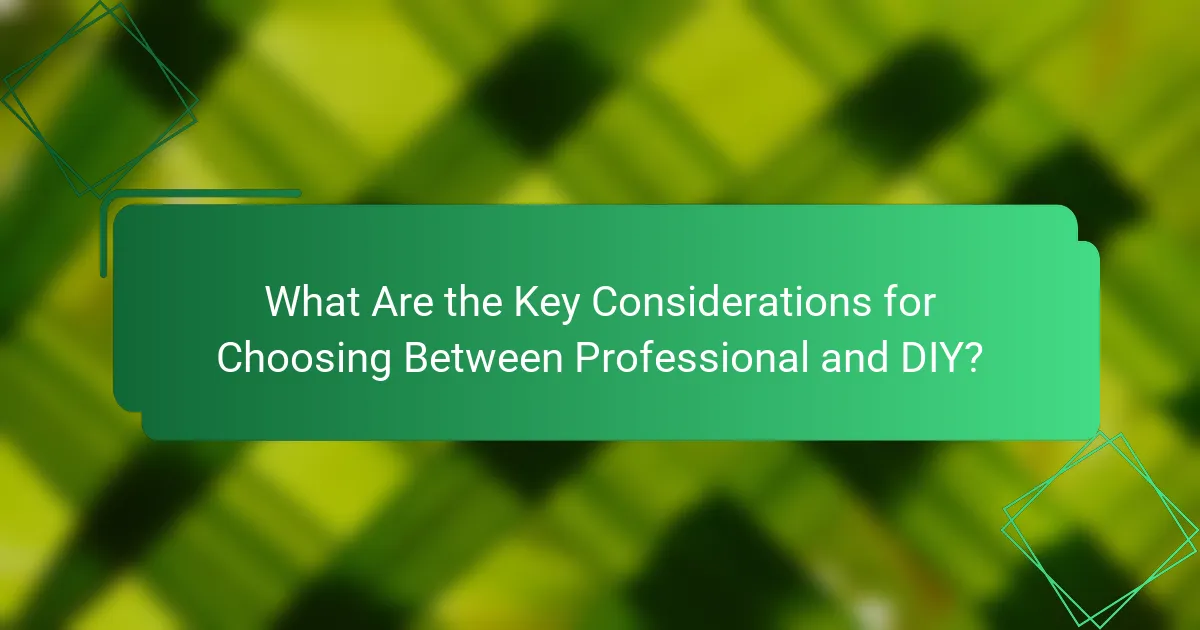
What Are the Key Considerations for Choosing Between Professional and DIY?
Choosing between professional and DIY book design involves evaluating budget, skill level, and project timelines. Each option has its own advantages and challenges that can significantly impact the final product.
Budget constraints
Budget is often the primary factor when deciding between professional and DIY book design. Professional designers typically charge anywhere from a few hundred to several thousand dollars, depending on their experience and the complexity of the project. DIY design can be more cost-effective, but it may require investment in software or training.
Consider your overall budget for the book project. If funds are limited, DIY might be the best route, but be prepared for potential compromises in quality. On the other hand, allocating a reasonable budget for a professional designer can enhance the book’s marketability and appeal.
Skill level and design experience
Your skill level and design experience play a crucial role in the decision-making process. If you have a background in graphic design or are comfortable using design software, DIY could yield satisfactory results. However, if you lack experience, the learning curve may lead to subpar designs that do not meet industry standards.
Evaluate your strengths and weaknesses. If you choose the DIY path, consider online resources or courses to improve your skills. For those with limited design knowledge, hiring a professional can save time and ensure a polished final product.
Project timeline and deadlines
Time constraints can heavily influence your choice between professional and DIY book design. Professional designers can often complete projects more quickly due to their experience and resources, which is essential if you have tight deadlines. DIY projects may take significantly longer, especially if you are learning as you go.
Assess your timeline carefully. If you need the book ready for a specific event or launch, a professional might be the safer option. Conversely, if you have flexibility in your schedule, DIY could be a viable choice, allowing you to work at your own pace while honing your design skills.
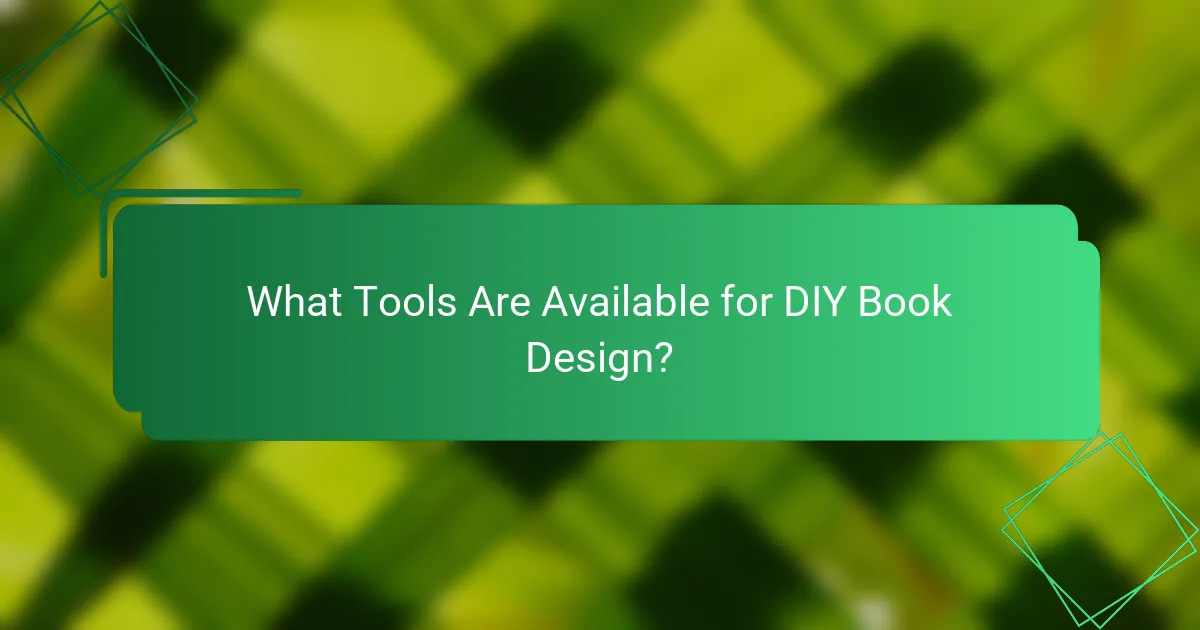
What Tools Are Available for DIY Book Design?
DIY book design offers various tools that cater to different skill levels and needs. From user-friendly platforms to advanced software, these tools can help authors create professional-looking books without hiring a designer.
Canva for beginners
Canva is an accessible design tool ideal for beginners who want to create visually appealing book covers and layouts. It features a drag-and-drop interface, making it easy to add images, text, and elements without prior design experience.
With a range of templates specifically for book design, users can quickly customize their projects. Canva offers a free version, but premium features are available through a subscription, typically costing around $12.99 per month.
Adobe InDesign for advanced users
Adobe InDesign is a professional-grade software used for complex book layouts and designs. It provides extensive control over typography, layout, and formatting, making it suitable for experienced users who require precision and flexibility.
InDesign supports advanced features like master pages, styles, and interactive elements, which are essential for creating high-quality printed and digital books. The subscription cost is about $20.99 per month, which reflects its robust capabilities.
